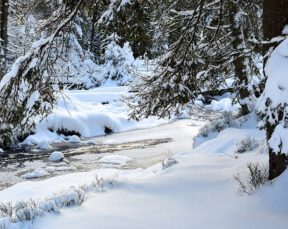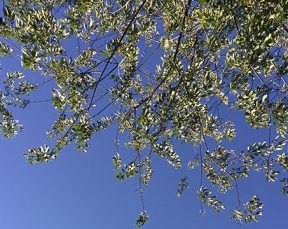By GSWA Education Associate, Dan Ross


If you haven’t done so already, I urge you to get out and explore the many marshy trails of the Great Swamp and take in all the beauty the area has to offer. As you make your way along the network of boardwalk planks, pausing briefly to appreciate the ballad of the returning song birds and admire the peculiar habits of worm foraging robins, you may notice a small purple and green bulb-like flower emerging from the dark swampy soil in large numbers.
This, of course, is Symplocarpus foetidus, or the eastern skunk cabbage – which will eventually leaf out and assume its familiar cabbage-like foliage for which is gets its namesake. The slightly less enthralling side of its common name is where we will now turn out attention, its pungent odor! You may have noticed that when the foliage of the skunk cabbage is bruised or broken it releases an unpleasant skunky smell. While this odiferous quality is certainly repulsive to humans, it may also serve to discourage deer browse.
It is speculated that in the same way that the sweet fragrant scent of certain flowers may attract birds and bees, the foul smell of the skunk cabbage may be a mechanism for attracting its primary pollinators; flies, stoneflies, and bees, which are also emerging at this time. But that’s not the only trick that skunk cabbage has in its arsenal! You may have noticed that skunk cabbage emerges very early in the spring and can come right up through the snow with ease. This is because skunk cabbage is one of only a few plants that undergoes a process called thermogenesis, a metabolic process that yields heat!
The plant’s metabolism converts nutrients into useful energy, which in turn gives off heat, causing the surrounding snow to melt. Thermogenesis can produce temperatures between 27ºF and 63ºF higher than the ambient air temperature. It is also believed that this heat helps to spread the plant’s foul scent, attracting more potential pollinators.
If you aren’t impressed by this seemingly mundane swamp plant yet, consider yet another survival strategy that the plant utilizes. Unlike most plants, which grow upwards towards the sky by sending a shoot up from their roots and branching out, the skunk cabbage has what is known as a contractile root system. These roots actually pull the skunk cabbage downward and entrench the plant even deeper into the soil. As you might imagine, this trait makes skunk cabbage nearly impossible to pull out of the ground, increasingly more so as the plant grows and becomes further imbedded. As the plant ages, its lower leaves get pulled beneath the ground and new ones emerge. So if you are ever curious about how old a skunk cabbage may be, one way to find out is to start digging!
The next time you are out wandering the trails in early spring; breathe in the fresh air, appreciate the warm rays of sunshine on your cheeks, and take some time to admire this small inconspicuous wetland plant – just make sure not to trample or disturb it’s foliage in the process or you may be left holding your nose!



